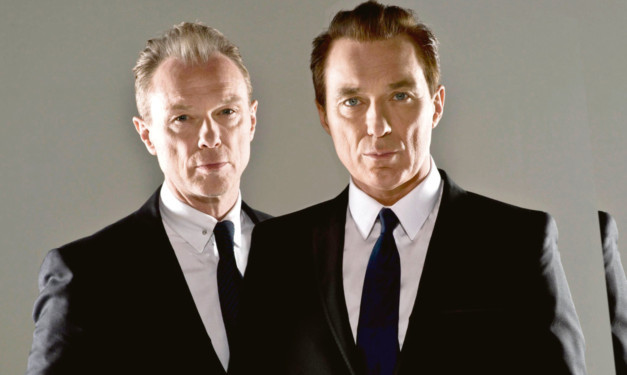
THEY played notorious gangsters The Krays on the big screen, but Glasgow’s gang culture left Martin and Gary Kemp horrified on a recent visit.
Former EastEnders star Martin described the hatred he found in the city as being like “a life force of its own”, while Gary feared for his safety when he was confronted by a gang as he tried to film on rundown streets in the East End.
“I’ve never come across anything like it before,” admitted horrified Martin, 51, as he recorded a new documentary series looking at the history of gangs in Britain’s cities.
And Gary experienced some of that terror first hand.
“We got a lot of hassle and I’ll admit it was a bit scary,” he recalled.
“We were a tiny crew and we had no security with us.
“There were a lot of people coming up to us and telling us where to go!
“We’re quite recognisable, so it was a worry.”
Gary and Martin made it out of the city in one piece, but not before they investigated Glasgow’s infamous violent side that once saw it crowned the murder capital of Europe.
“I know Glasgow really well and I have a lot of friends there,” Gary continued.
“But I was always taken to the parts of the city that everyone is comfortable with and I’ve loved that side of Glasgow for years.
“This time I went to much tougher and harder areas.
“In most cities the driving force as to why kids form or join gangs is because they want to belong or perhaps just for financial gain.
“But in Glasgow it was different the gang aspect was purely sectarian. I found that more depressing and it’s harder to challenge.
“Sectarianism doesn’t exist in the rest of the UK, apart from Northern Ireland.”
In Gangs Of Britain, Gary focuses on a historical case from each city while Martin investigates a more contemporary story.
Martin talked to Christine Goodall, an oral surgeon at the Southern General hospital, who regularly deals with victims of facial slashings.
She describes one of the DIY weapons of choice two razor blades or Stanley knife blades stuck to the back of a toothbrush. A gap is left between the blades, so that a small piece of skin remains between the cuts, making it harder to repair.
But a visit to Strathclyde Police’s violence reduction unit reveals how a hands-on approach by police is seeing hundreds of gang members leave a life of violence behind, with rates of violent offending and weapon possession substantially down in the past five years.
Gary continued: “Martin told me the worst thing was the CCTV footage he was shown off-camera that depicted terrible violence. He was really shocked.
“It was also quite horrific when the surgeon at the Southern General told him about the pride people have in their scars.
“I don’t think that mentality will change, unfortunately.
“We come from a working class background, the poorest area of Islington.
“We were never involved in that scene but we knew people who were and just how easy it is to slip into that culture.”
Gangs Of Britain with Gary & Martin Kemp begins on April 21 on the Crime & Investigation Network at 9pm.

Enjoy the convenience of having The Sunday Post delivered as a digital ePaper straight to your smartphone, tablet or computer.
Subscribe for only £5.49 a month and enjoy all the benefits of the printed paper as a digital replica.
Subscribe